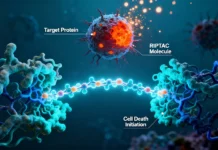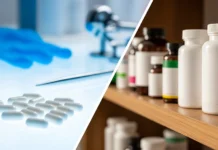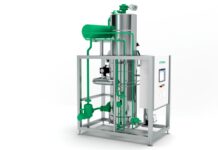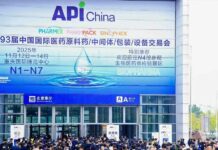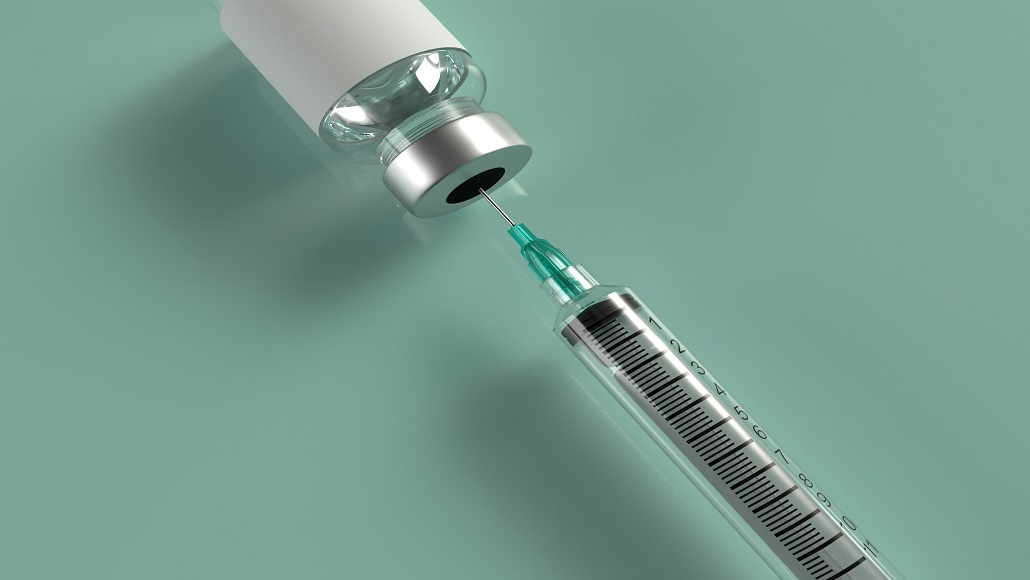As the biologic therapies go on to become increasingly sophisticated, many of the newest formulations, especially the ones in monoclonal antibodies (mAbs), gene therapy, and fusion proteins, are inherently high when it comes to viscosity.
These high-viscosity biologics go on to pose a very distinct challenge when it comes to fluid systems design throughout the entire biomanufacturing workflow.
Whether it comes to upstream, cell culture feed, final fill finish, or downstream purification, these fluids happen to demand very precise control, innovative material solutions, and balanced pressure handling.
It is well to be noted that designing the fluid systems in order to handle such kinds of materials is no longer a matter of scaling the old technologies. It needs rethinking geometry, pump strategies, flow rates, and even how the force can be distributed within the connectors as well as tubing.
It is now the time to study the engineering principles, barriers as well as solutions when it comes to fluid system designs for high viscosity biologics by way of emphasizing the crucial requirement for performance, product integrity, and safety.
Checking out the nature of high-viscosity biologics
Viscosity, which happens to be the measure of fluid resistance to flow, happens to get dramatically elevated in many kinds of modern biologics. Unlike the line-based formulations, the high-viscosity biologics happen to have protein concentrations that exceed 100 mg/mL or even incorporate large molecular structures that go on to increase the shear sensitivity. This kind of increased thickness goes on to affect every part of the fluid system. The pressure requirements rise, pump performance drops, and even the mixing becomes more uneven, especially when it comes to narrow or digit tubing. In addition to this, temperature fluctuations or even prolonged dwell times can go ahead and cause these biologics to degrade, aggregate, or compromise the product stability.
Hence, the fluid handling systems have to be designed not only to transfer material but at the same time to do so in a very gentle and even manner and also with minimal resistance.
What are the key design challenges when it comes to handling viscous fluids?
Growing pressure drops when it comes to the system components
As fluid viscosity goes on to increase, so does the pressure required in order to move it across filters, tubes, or valves. The standard systems often happen to underestimate the needed pressure compensation, thereby leading to flow inconsistencies as well as pump failures. For example, a tube diameter that is suitable when it comes to water-like fluids may as well become a very serious concern for viscous protein solutions.
Pump limitations along with material shear stress
It is worth noting that the traditional peristaltic or diaphragm pumps may as well cause pulsation or even turbulence, which can shear delicate biologics. The fact is that high-viscosity materials need low-shear or specialized diaphragm pumps, which are designed for gentle motion. These systems have to be validated by both volumetric accuracy and shear control.
Temperature sensitivity along with viscosity control
It is well to be noted that numerous biologics go on to become even more viscous when it comes to lower temperatures, especially during cold storage or even low-temperature processing. Fluid systems must go ahead and accommodate this kind of variability by way of incorporating thermal control or by altering the system specifications through formulation, filling, and thawing.
Filling precision at commercial scale
When it comes to fill-finish, high viscosity goes on to affect the speed, preciseness, and cleanliness in dispensing. Droplet formulation, inconsistent flow, and nozzle residue can all go ahead and increase the waste or even lead to compliance risk. Specialized nozzles, pressure resistance systems, and mixing are often needed in order to stabilize the operation.
Engineering approaches when it comes to system optimization
In order to successfully process the high viscosity biologics, fluid system engineers have to roll out a multi-pronged design approach, which blends fluid mechanics along with biopharmaceutical quality standards.
Low-Shear Pumping Solutions
It is well to be noted that rotary lobe and advanced diaphragm pumps can be optimized when it comes to high viscosity. Systems have to be tested when it comes to full stability, backpressure control, and capacity to maintain performance with long duration and act without any kind of generation of microbubbles or shear degradation.
Tubing along with connector redesign
The wider inner diameter along with a smoother flow path is necessary in order to minimize friction losses. Silicon and thermoplastic elastic meter – TPE tubing along with enhanced inner surface finish enables reduction in terms of pressure requirements while at the same time maintaining biocompatibility. Custom connectors having enlarged flow-through geometry help in maintaining laminar flow even when the pump operates at low speeds.
Inline pressure as well as flow monitoring
The integrated senses help with real-time feedback when it comes to flow velocity, temperature, and backpressure, thereby helping the manufacturers to go ahead and respond to fluctuations in an urgent way. When it comes to high-viscosity biologics, the systems are very crucial in order to ensure product quality, which is consistent, and process safety as well.
Modules that are preheating or viscosity conditioning
Modular heating jackets, infrared-controlled transfer paths, and warm zones are all increasingly common when it comes to biologic film finish operations. These systems happen to decrease the viscosity temporarily to get smoother flow while at the same time ensuring no thermal degradation takes place during the transit.
Adaptation of a single-use system
It is worth noting that single-use technologies are also evolving in order to support viscous fluids. Bag ports are getting widened, manifolds are getting redesigned in order to prevent fluid pooling, and pump tubing is rated for the highest stress and temperature ranges. All this helps the manufacturers to retain the advantages when it comes to disposable systems without having to sacrifice on flow control.
Computational fluid dynamics (CFD) and modeling roles
That advanced CFD modeling has gone on to become an indispensable tool when it comes to fluid system design as far as viscous products are concerned. Engineers make use of it in order to simulate flow parts, pinpoint areas of turbulence or stagnation, and anticipate shear stress distribution throughout the components.
These models also go on to enable preemptive identification when it comes to potential risks during the scale-up from pilot to full commercial production. As far as high-value biologics are concerned, this decreases the trial-and-error phase, lessens the development timelines, and also makes the validation process more robust.
Design validations along with regulatory expectations
Designing systems when it comes to high-viscosity fluids must sync with regulatory expectations as far as consistency, product safety, and integrity are concerned. Agencies such as EMA and FDA have gone on to increasingly anticipate detailed validation when it comes to process components, especially in dealing with new therapeutic modalities.
It is well to be noted that the validation protocols must demonstrate –
- That materials happen to be compatible along with the biologic.
- That system pressure, along with flow rates and shear forces, is within the acceptable range.
- And that the performance goes on to remain consistent, and that too under worst-case operational scenarios.
The rising area of focus happens to be design traceability by showing how every element of the system has gone on to get tested and even adapted for special viscosity range or therapeutic class.
Designing for flexibility as well as therapeutic evolution, the future Outlook
As customized medicines, cell therapy, and novel biologics go on to expand, so is going to be the diversity of fluid properties. The system is designed for flexibility; once it gets adopted to varying viscosities, fill volumes, and flow rates, it is going to become the gold standard.
Innovations like smart polymer tubing, automated self-calibrating nozzles, and adaptive pumping systems are all emerging in order to meet this barrier. Integration when it comes to digital twins along with process analytics will further go on to optimize control as well as throughput.
At the end of the day, the future of fluid system designs for high viscosity biologics not just lies in handling viscosity but in enabling more intricate, valuable, and sensitive therapies so as to reach patients in a much faster and safer way.
Conclusion
The growth when it comes to high-viscosity biologics is indeed shaping fluid-handling expectations within biomanufacturing. These products happen to challenge every element when it comes to fluid system design, right from pump selection and tubing geometry to regulatory validation as well as temperature control.
It is worth noting that success depends upon integrating the robust engineering along with biological insight, creating the system that can go on to maintain flow integrity while at the same time preserving the therapeutic quality.
As the biopharmaceutical spectrum goes on to evolve, companies that invest in viscosity-ready systems will find themselves in a much better position in order to scale novel therapy, deliver on the promises that are being analyzed in terms of modern medicine, and also meet the regulatory demands.






